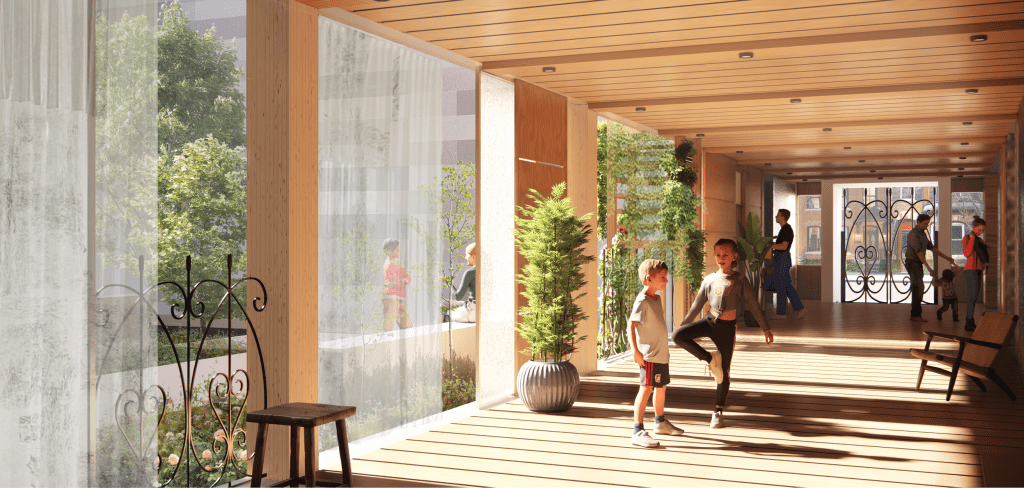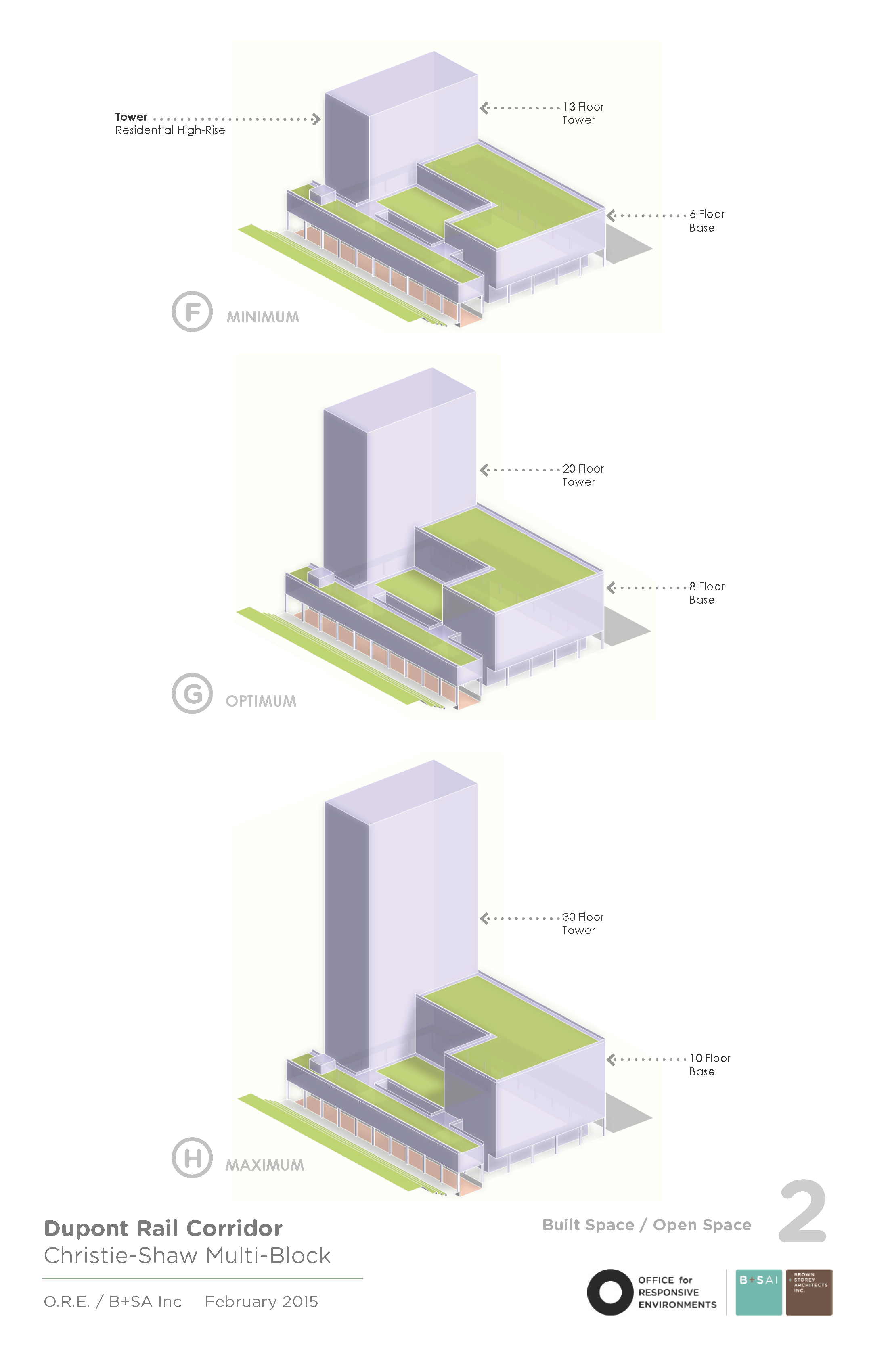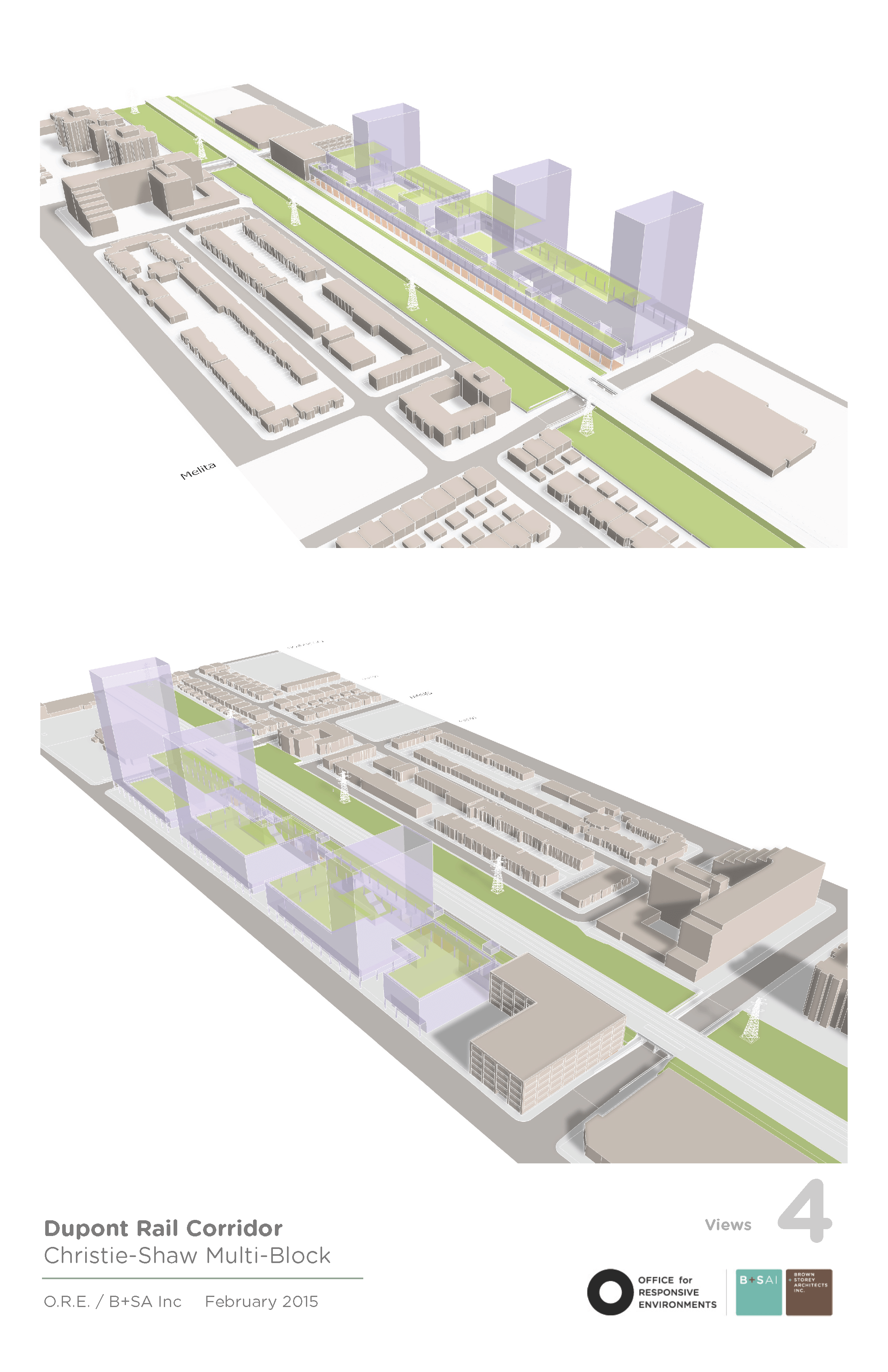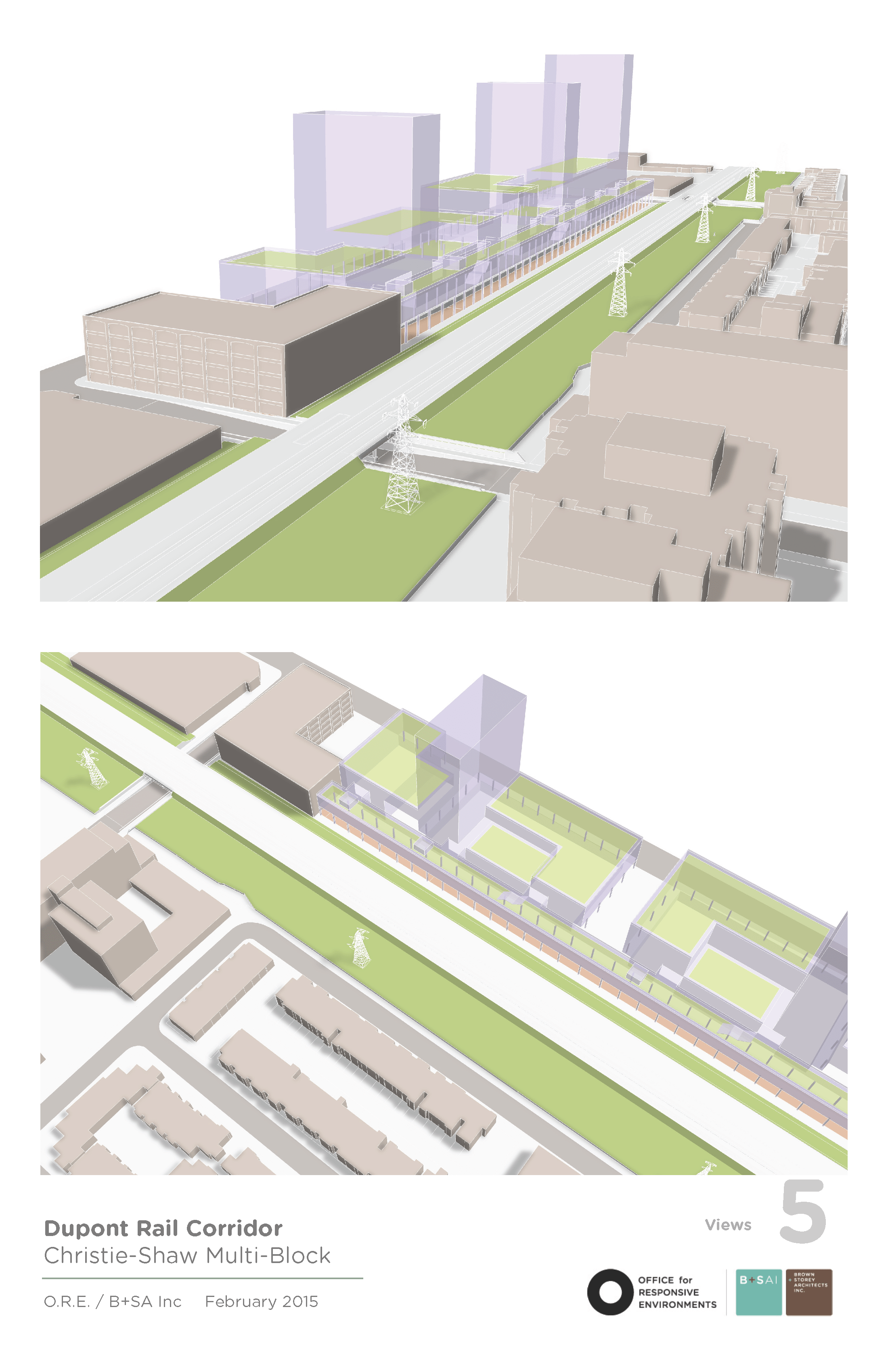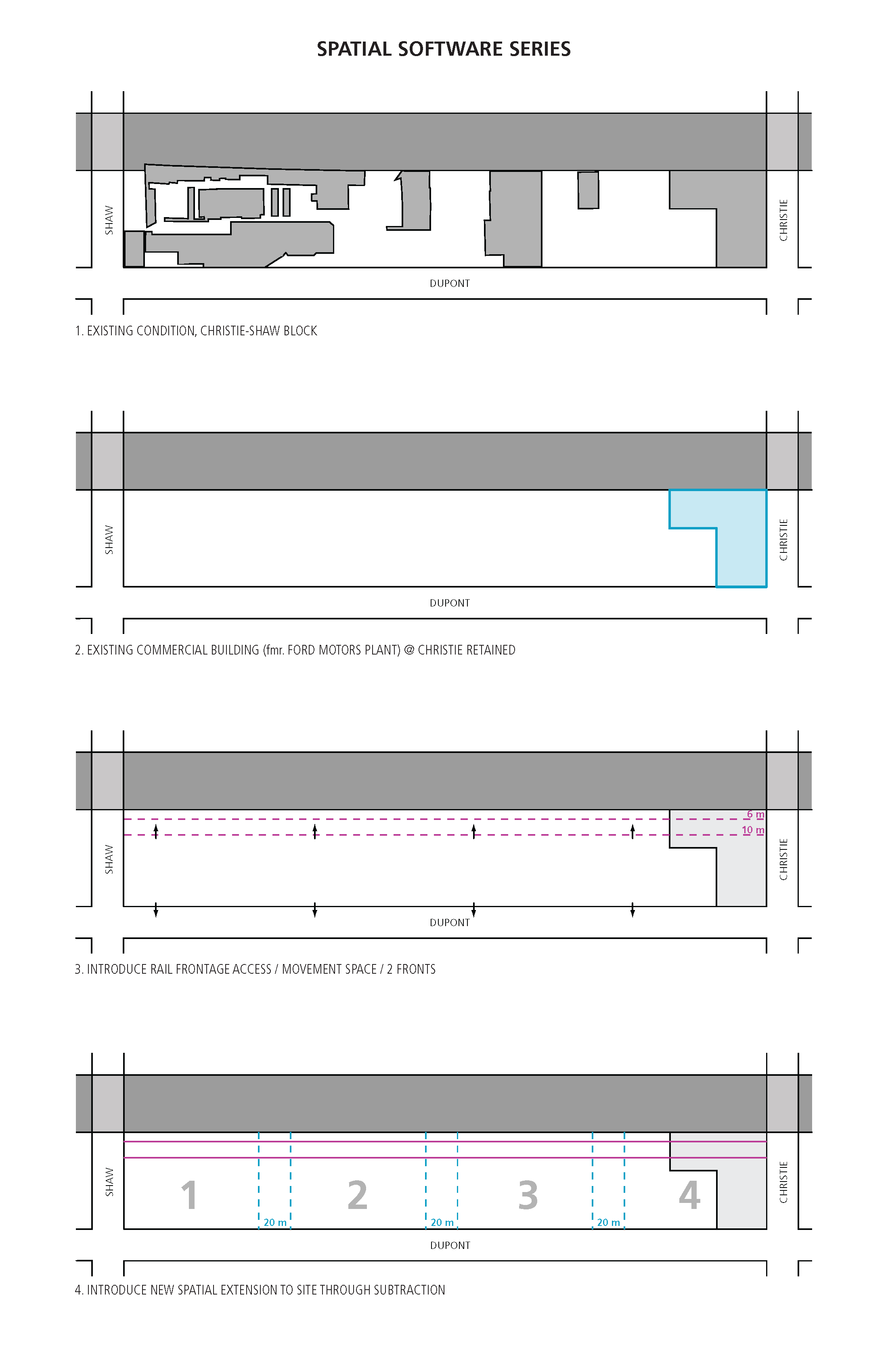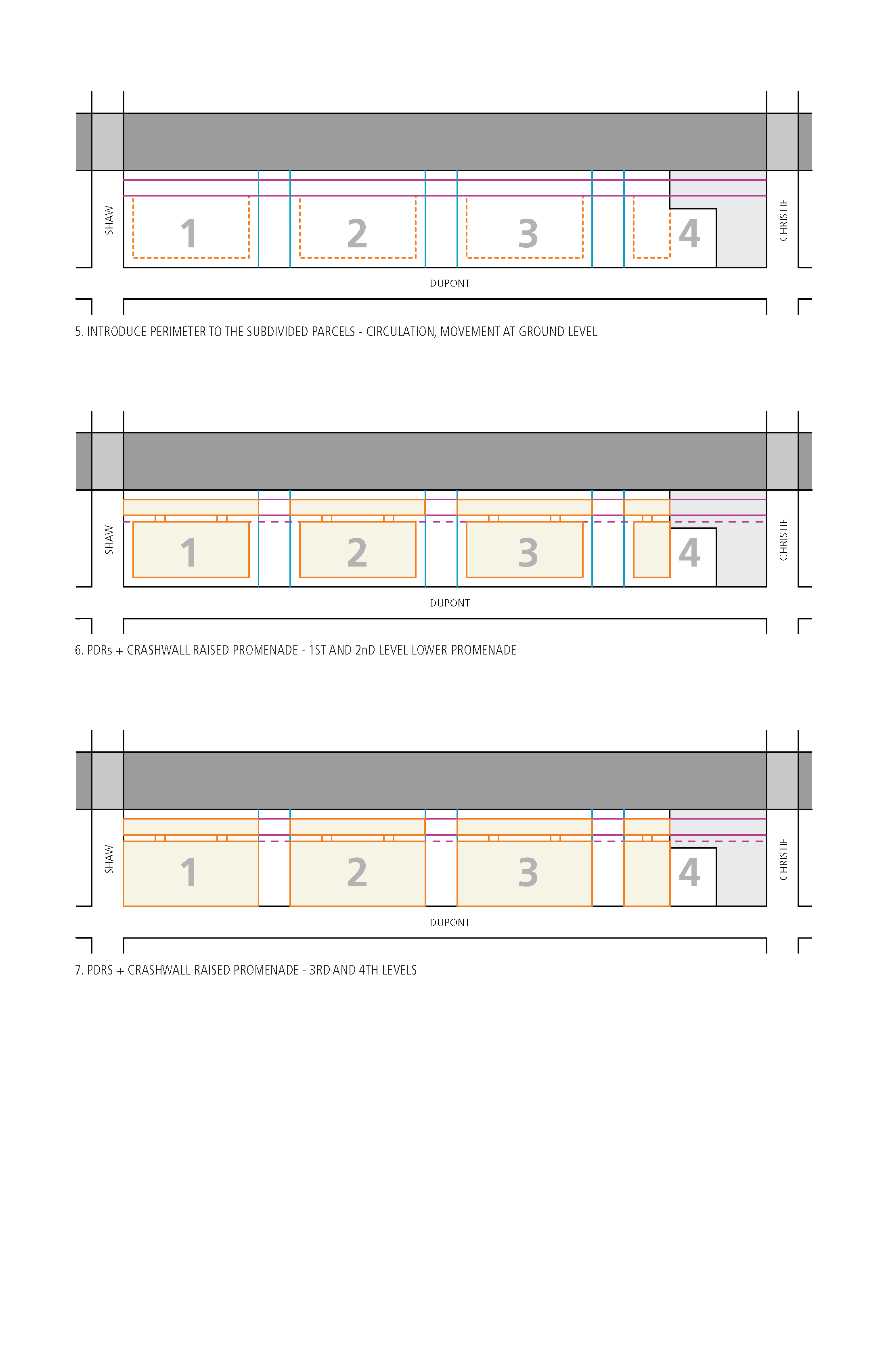Urban Rail Corridors: Reconstructing Dupont
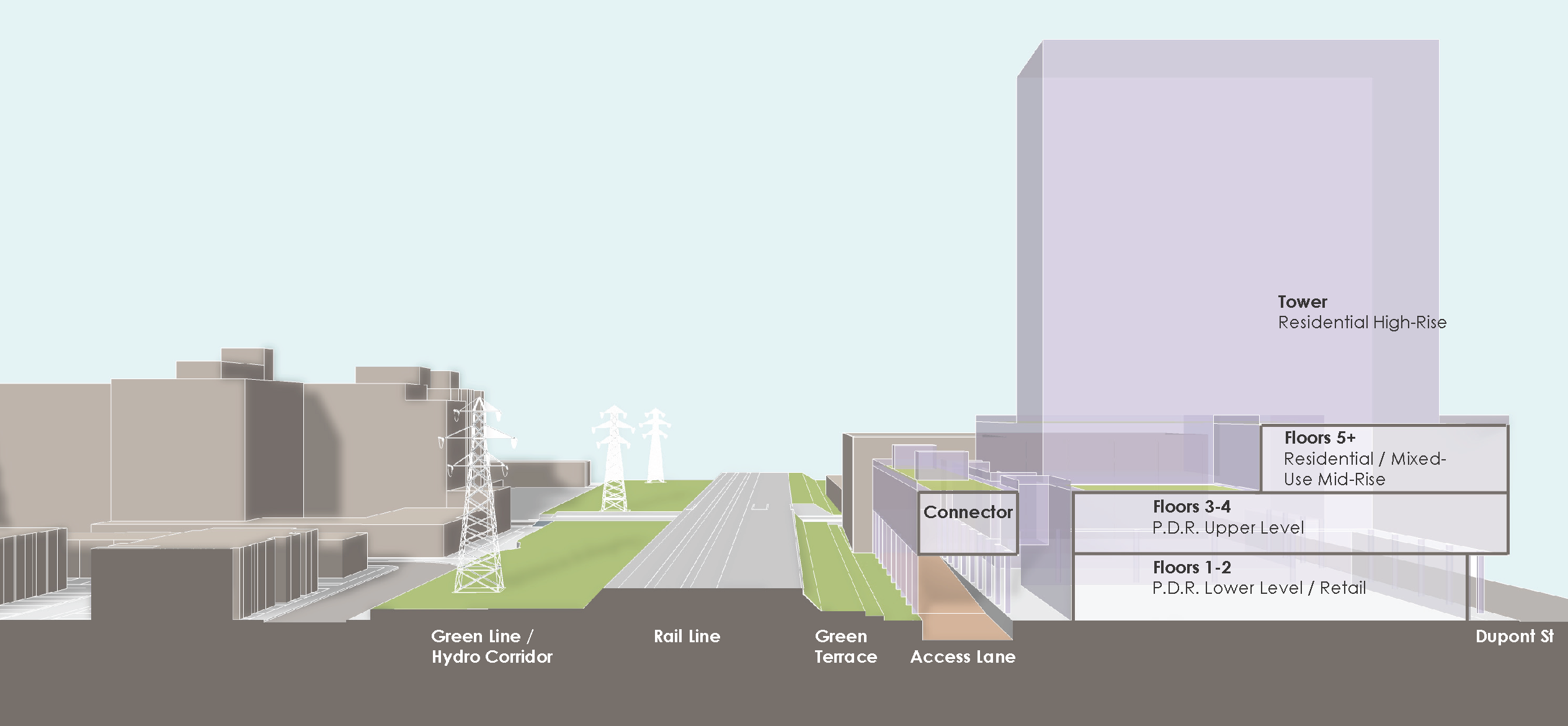
Linear Networks – The Railway
In a city that seems to still be divided into its pre-amalgamated entities, linear networks like Toronto’s rail corridors present an opportunity to forge new connections that cross geographical and political perceived boundaries. The rail corridors and their adjacent parallel zones present conditions that are largely underdeveloped. The rail safety standards are being questioned on many fronts – what should be transported through residential neighbourhoods, how to build adjacent to, and how to occupy new public space alignments. The Dupont / GreenLine corridor is central to this discussion, and should become a focus for dialogue between the City and the railways.
The West Toronto Railpath has demonstrated that there is real public value in getting close to the railway, in accepting it as a ‘front’ for neighbourhoods (not just a ‘back’) and in leveraging this infrastructure into a public space that can encourage reinvestment in the adjacent neighbourhoods. The spaces that border Toronto’s rail corridors are an under-exploited opportunity to re-connect neighbourhoods in their immediate context, as the West Toronto Railpath has done, and to make unique trans-City linkages with active transportation corridors at a civic scale. We think that railway operations should be as responsive to the needs of the city as the city is asked to be accommodating to the operations of the railway, and that this philosophy (rather than avoidance and exclusion) should be driving our zoning and design decisions for the rail corridors.
Reconducting Dupont: Christie-Shaw Multiblock
Brown + Storey Architects have undertaken an ongoing study of development and public space alternatives for lands adjacent to urban railway corridors. Dupont Street, which straddles the main east/west CP rail corridor and the Green Line (Hydro Corridor), has become the focus of many interests in the City. We are interested in starting a conversation with residents groups, the development industry, small industry and artisans, and the planning community to build a new model for re-imagining how urban rail corridors can bring a new impetus that goes beyond current plans to reconnect neighbourhoods with new built forms and open space typology
